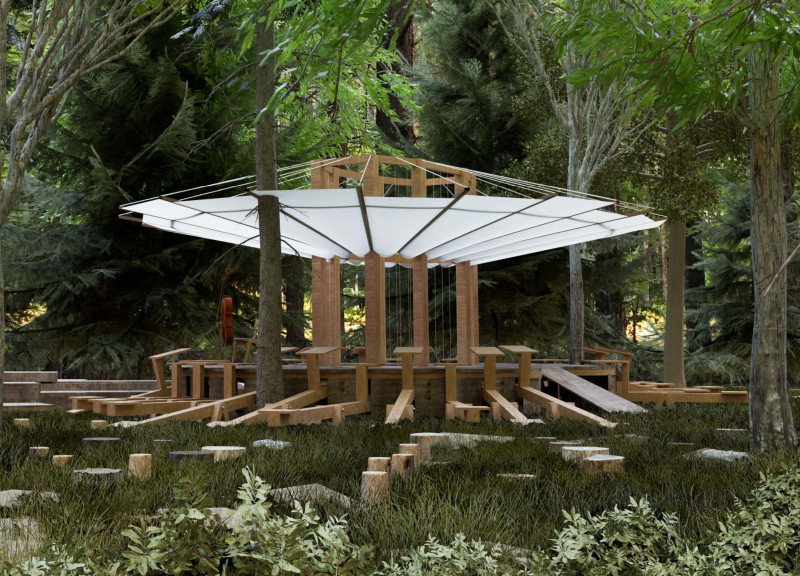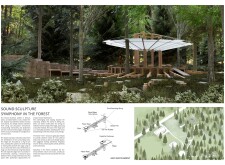5 key facts about this project
### Project Overview
Located in a forested area of Siness, Latvia, the design emphasizes the relationship between nature and music through the integration of traditional Latvian musical instruments. The intent is to create an immersive environment that fosters interaction among performers, audiences, and the surrounding landscape. The structure serves as both a performance venue and a sculptural element, promoting community engagement and creative exploration within a natural setting.
### Spatial Organization and Acoustic Design
The layout is thoughtfully organized to encourage discovery and interaction. The overall form responds to the existing topography and tree distribution, enhancing the connection between the built environment and nature. A central gathering area facilitates performances, while a sloped courtyard optimizes acoustic projection, allowing for natural sound amplification. Instrument placement is designed to enhance the interplay between performers and audience, supported by seating configurations that augment sound projection.
### Material Selection and Sustainability
Key materials include 140x140 mm wood beams, which provide structural integrity and warmth, alongside dense felt for sound absorption. The use of recycled materials, such as old tire rubber, contributes to the durability of performance areas while demonstrating a commitment to sustainability. Thick sounding strings are utilized within the musical instruments to produce harmonic tones when engaged. Elevated above the ground, the design minimizes ecological disruption, allowing for the preservation and health of the underlying ecosystem while promoting an acoustic dialogue with the surrounding trees.


















































